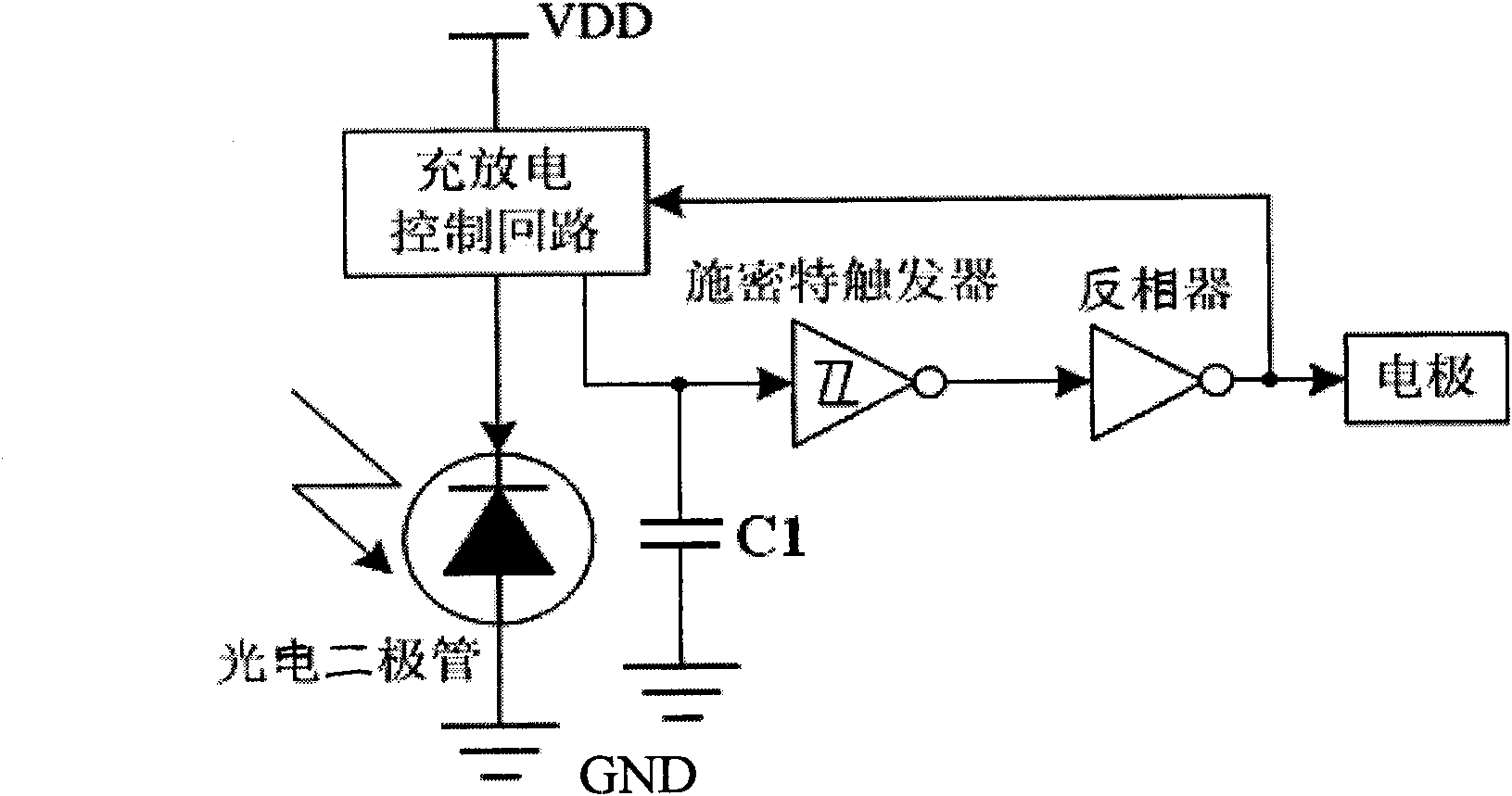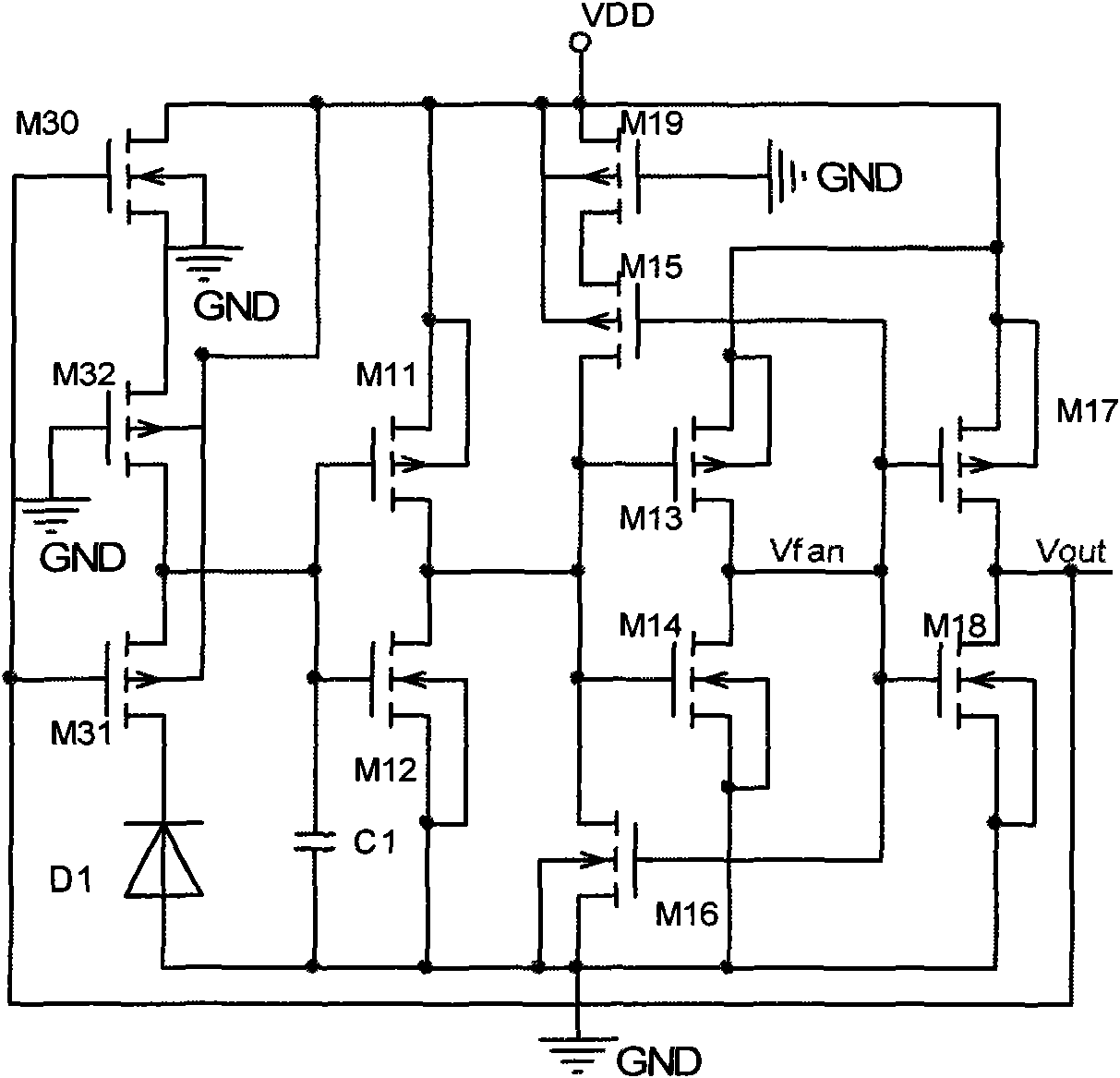Artificial retina electrostimulation pixel circuit applied to visual function restoration
A retinal and electrical stimulation technology, applied in artificial respiration, physical therapy, single pulse train generator, etc., can solve the problems of small dynamic range, high power consumption, visual distortion, etc., and achieve increased dynamic range, low power consumption, Reduce the effect of visual distortion
- Summary
- Abstract
- Description
- Claims
- Application Information
AI Technical Summary
Problems solved by technology
Method used
Image
Examples
Embodiment Construction
[0020] The present invention will be further described below in conjunction with the accompanying drawings and specific embodiments.
[0021] The present invention is used for the artificial retina electrical stimulation pixel circuit of visual function restoration, such as figure 2 As shown, it includes a photodiode, a capacitor C1, a Schmitt trigger, a CMOS inverter, a charge and discharge control loop, and a stimulating electrode; the anode of the photodiode is grounded, and the external visible light is the input of the photodiode. After the external visible light image is focused by the eyeball, it irradiates the photodiode and forms a photocurrent on the photodiode. The cathode of the photodiode is connected to the first output terminal of the charge and discharge control circuit, and the second output terminal of the charge and discharge control circuit is a Schmitt trigger. The input terminal of the device, a capacitor C1 is connected between the input terminal of the...
PUM
 Login to View More
Login to View More Abstract
Description
Claims
Application Information
 Login to View More
Login to View More - R&D
- Intellectual Property
- Life Sciences
- Materials
- Tech Scout
- Unparalleled Data Quality
- Higher Quality Content
- 60% Fewer Hallucinations
Browse by: Latest US Patents, China's latest patents, Technical Efficacy Thesaurus, Application Domain, Technology Topic, Popular Technical Reports.
© 2025 PatSnap. All rights reserved.Legal|Privacy policy|Modern Slavery Act Transparency Statement|Sitemap|About US| Contact US: help@patsnap.com



